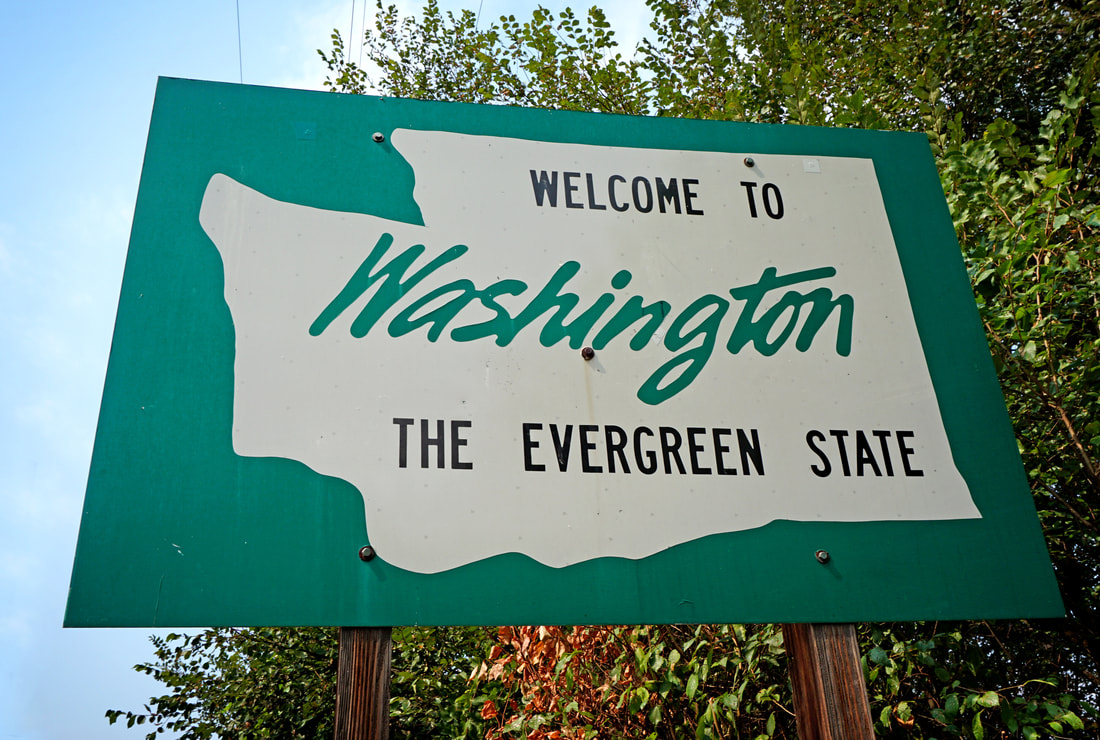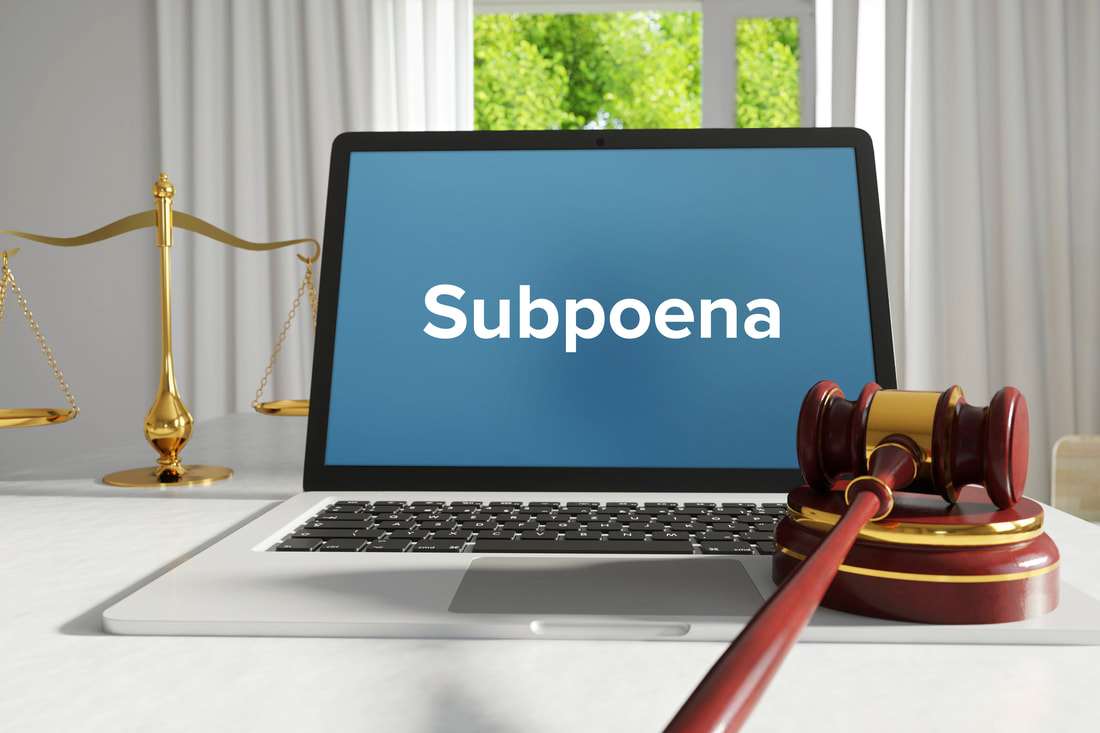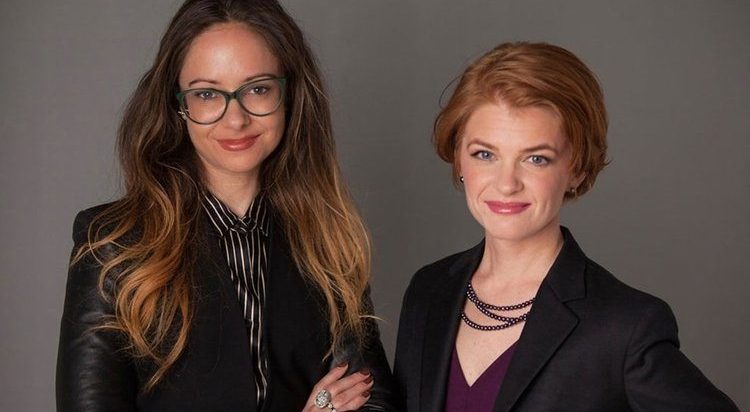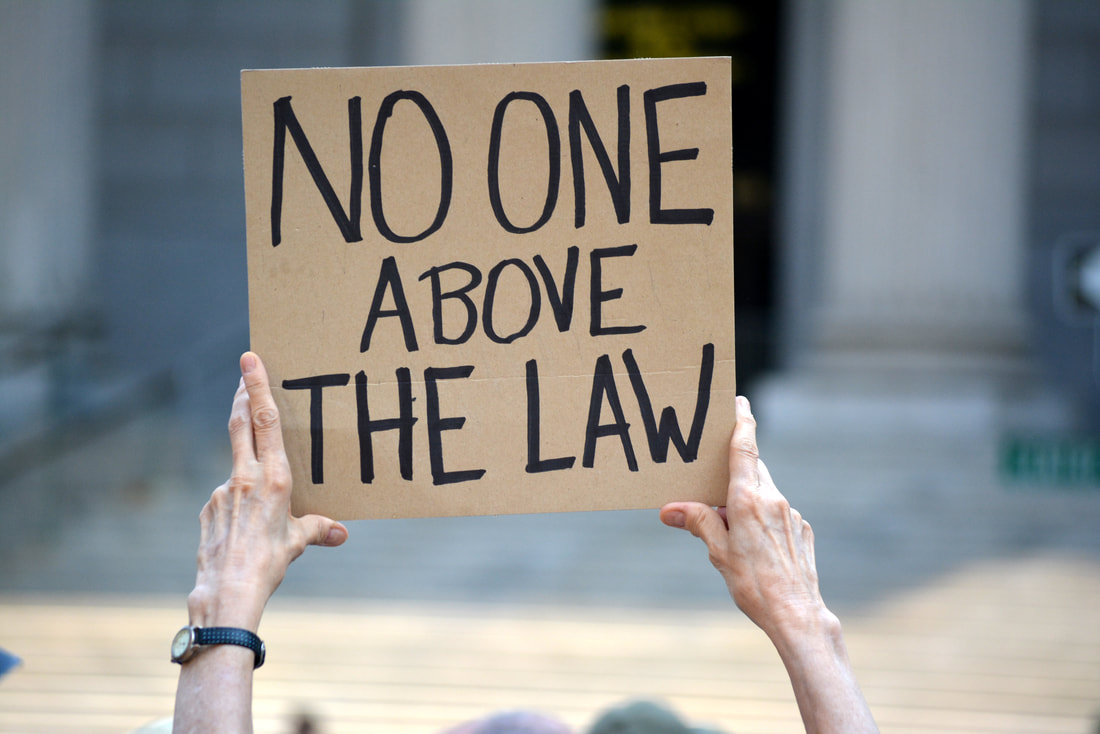|
Washington has taken steps in recent years to create laws and regulations aimed at keeping the Evergreen State green, but as its population and climate vulnerabilities grow, it's facing environmental issues involving water quality, wildlife and agriculture, raising compliance concerns for industry and fueling conservationist missions.
The state has worked to strengthen environmental standards and practices, but green groups say lawmakers and regulators could go further. At the same time, industry representatives warn of the costs of what they see as new burdens, such as installing new air pollution control technology or better controlling agricultural waste. In the thick of things are the Evergreen State's environmental attorneys, who are fielding a growing number of increasingly complex questions from clients about these issues and more, said David Weber, managing principal of Beveridge & Diamond PC's Seattle office. "Washington State is a laboratory for muscular environmental regulation, from its economywide Climate Commitment Act to the enactment of the strongest state chemicals bill in the country," Weber said. "For environmental lawyers, the relentless pace of new legislation and rulemakings highlights the importance of being proactive in monitoring and unpacking proposed rules for clients." Here are four pressing environmental issues in Washington state. Climate Under the Climate Commitment Act's "cap-and-invest," or cap-and-trade program, the state sets a greenhouse gas emissions cap and then decreases the limit over time to meet statutory reduction requirements. This program, along with other fuel and hydrofluorocarbons programs, is supposed to help the state meet a goal of net-zero carbon emissions by 2050. The CCA was passed in 2021, and the state spent last year gathering emissions data from entities covered by the law. The first cap went into effect in January, and the first credit auction will be held this month. Robert Smith, a partner in K&L Gates LLP's Seattle office, said Washington's cap-and-trade program has similarities to California's but includes some modifications. Before Washington's law passed, California was the only single state operating such a program. On the East Coast, 12 states participate in the Regional Greenhouse Gas Initiative. Smith said attorneys and businesses are going to have to be on top of their game to make sure they're complying with the new regime. "It's going to be a pretty significant thing this year, in terms of making sure that regulated entities that need to comply are aware of those requirements, and learning how to comply in terms of striking a balance between getting emissions numbers down on their own … and needing to go to the auction," Smith said. One of the unique features of Washington's program is that proceeds raised from the auctions will go to fund new investments in climate resiliency programs, clean transportation and efforts to address health disparities across the state. "There is a very strong environmental justice component in how this is set up," Smith said. "So there will be an Environmental Justice Council that will provide recommendations on where the money goes." The Duwamish River On its way into Seattle's Elliott Bay, the Duwamish River travels through a heavily industrial area. More than 40 businesses are negotiating how to split the estimated $1 billion cost of cleaning up this lower portion of the river, including The Boeing Co. and the Port of Seattle. The port is suing Boeing in federal court, alleging the aerospace company is not paying its fair share. The lawsuit is currently stayed pending further negotiations between the parties. Beveridge & Diamond's Weber, who represents several parties in the cleanup that are not involved in the lawsuit, said the litigation potentially jeopardizes the ability of all parties to resolve the matter. As the Lower Duwamish process plays out, community and green groups are focused on starting to clean up another part of the river in Seattle, the East Waterway, said Patti Goldman, a senior attorney at Earthjustice who is based in Seattle. She said there has been some conflict between the government agencies involved in overseeing any cleanup and Earthjustice's client, the Duwamish River Cleanup Coalition, about what is needed at the site. "Seattle became the city it is because of the Duwamish River, but the river suffered as a result," Goldman said. "Cleaning up the river and reducing the air pollution that plagues this overburdened community will challenge lawyers to ensure implementation of bedrock environmental laws and evolution of those laws to incorporate environmental justice principles." Puget Sound Puget Sound, which, along with waters in Canada, is part of the Salish Sea, provides Washingtonians and visitors with an abundance of resource and recreation opportunities. But the sound and its wild inhabitants have suffered from industrialization, development and population growth in the area. The U.S. Environmental Protection Agency, the Washington State Department of Ecology, Native American tribes and many other local community and business groups have been part of an ongoing conversation about how to improve the sound. Significant funding, new regulations and voluntary boat measures are some of the ways the organizations are approaching the problem. Congress doles out money to the EPA as it works with state agencies, local and tribal governments, universities and nongovernmental organizations to help protect and restore Puget Sound. One of the key issues in the sound is the survival and health of the Southern Resident population of orcas. "Orcas and the salmon they eat are the essence of Washington state and the Salish Sea, existential to the tribes, at the core of the state's history, and our moral responsibility now that they are on the Endangered Species list," Goldman said. "Our environmental laws have the potential to recover orcas and salmon, but only if they are faithfully implemented, which is why lawyers are critical to their fate." Several programs are aimed at helping the killer whales, from reducing noise and traffic on the sound to mandating that sightseers keep a greater distance from them in the water. Water quality is also an issue for the sound. In November, the EPA laid out a final rule to reestablish water quality standards for Washington state that were rolled back during the Trump administration and are aimed at protecting people who eat fish and shellfish caught in the state. And last year, a D.C. federal judge upheld an EPA finding that allowed Washington to prohibit commercial and recreational vessels from discharging their sewage into Puget Sound. Agriculture State regulators, the agricultural industry and environmentalists have been battling over concentrated animal feeding operations for a few years now. Agriculture accounts for about 12% of Washington's economy, making the sector a major component, according to the Washington Farm Bureau, an industry trade association. From wheat fields and apple orchards to dairy farms and aquaculture, the state boasts a diversity of agricultural endeavors. Conservation groups secured a victory in their challenge to waste discharge permits used by dairy farms in Washington after a state appeals court found the approvals don't provide adequate protections to ensure excessive manure runoff doesn't pollute nearby water sources. In December, the state Ecology Department reissued the general permit after incorporating the court's feedback, but the same coalition of green groups that challenged the authorization the first time say the department once again failed to issue a permit that meets legal standards. They have filed a new administrative challenge that could also end up in court. "Ecology is failing at doing what the law requires in terms of actually doing analysis of what the reasonable treatments are and requiring each facility to implement those," said Andrew Hawley, a senior attorney at Western Law Environmental Center based in Seattle, who is representing the green groups. Aquaculture is big business in Washington, too, and is going through its own period of regulatory reform. Smith of K&L Gates noted that the state is one of the few in the nation that allow private ownership, sale and leasing of tidelands. But in November, the Washington State Department of Natural Resources announced a ban on commercial finfish net pen aquaculture on state-owned aquatic lands. The move aligns Washington's net pen salmon aquaculture policy with those of Alaska, California and Oregon. Cooke Aquaculture Pacific LLC and the Jamestown S'Klallam Tribe have filed separate lawsuits in state court challenging the state's move. "This is a pretty significant policy change," Smith said. "How this litigation plays out may also tell us a little bit more about the parameters of DNR authority generally as a title lessor, and how much leeway they have to terminate leases or not renew leases, which also could be generally applicable to things like shellfish aquaculture that also has a lot of state leases currently in Washington."
0 Comments
A Bankruptcy Court Served a Subpoena Via Twitter. Will This Catch On? In recent years, social media has slowly creeped its way into the legal industry, transforming decades-old practices. While some firms have turned to social media platforms to find new business opportunities, others are finding innovative marketing strategies and there are now “legal influencers.”
Courts have too, become creative with their use of social media, in some perhaps unexpected ways. Recently, for instance, the U.S. Bankruptcy Court for the Southern District of New York authorized served a subpoena via Twitter one of the founders of Three Arrows Capital, a Singapore-based cryptocurrency hedge fund, which is going through chapter 15 bankruptcy proceedings. Courts documents show that while foreign representatives of Three Arrows were previously unable to serve subpoenas on the founders “as their whereabouts are unknown,” the founders were active online on their email and Twitter accounts. To be sure, serving a subpoena via social media is a fairly new concept, and has only been authorized sparingly in the past. But experts say that it could become more common as the industry continues to adapt its proceedings to technological advancements. “I think these recent decisions permitting service via social media and alternate means show how the judiciary and judges [are] coming up with approaches to address the challenges associated with service of process,” said Bobby Malhotra, member of Winston & Strawn’s E-Discovery & Information Governance practice group. “While personal service I think is still the overwhelming norm, there are and there may be circumstances where a service by social media or alternate means is really the best available or viable option—or potentially the only option,” he added. In fact, Malhotra pointed to other examples of service of subpoena being authorized over email, voicemail message and even fax. And such instances have slowly started picking up in recent years. “As social media continues to penetrate every facet of our society, it will impact our legal system. There is this growing trend of service of process being accomplished through alternative means, and it may become more common,” Malhotra said. Of course, while other exceptions could be on the horizon, broader adoption of alternative means of service may ultimately depend on amendments made to the Federal Rules of Civil Procedure. And those could still be years away, said Brett Burney, principal at Burney Consultants and eLaw Evangelist at Nextpoint. “I don’t see that there’s going to be a major change in this approach until the federal rules are amended to somehow say, this can be delivered by any means necessary, including electronic means,” Burney noted. Still, judges turning to creative solutions could be just the “catalyst” for change needed, he added. Of course, going forward, whether other judges follow the same approach will depend on the reliability—and security—of such alternative methods. “I think it remains to be seen how courts and the legislature will balance litigants’ need for documents and information with due process concerns of ensuring notice, personal service,” Malhotra said. Susan Crumiller and Carrie Goldberg are law firm owners, survivors, and best friends whose firms represent plaintiffs in sexual abuse and harassment litigation. Now, the two have teamed up to create a co-counsel initiative called Survivors Law Project Brooklyn-based attorneys Susan Crumiller and Carrie Goldberg recently teamed up and launched the Survivors Law Project as a platform to represent plaintiffs in sexual abuse and harassment cases. Both are survivors themselves—this mission is very personal to them. They sat down with NLJ to discuss how litigation, the judiciary and juries have evolved since the onset of the #MeToo movement and what’s at stake now since the state of New York enacted The Adult Survivors Act in May 2022 creating a one year window to bring claims against abusers without statute of limitations.
You recently started the Survivors Law Project as an avenue to help sexual assault victims—this mission is also very personal to you—tell me more about it. Susan Crumiller: New York state passed this really historic legislation that gives survivors an unprecedented opportunity. There are so many of us who spent our whole lives thinking, we never had a shot at justice, that we just had to get over what happened to us and move on. And this new law changes everything in terms of validating our experiences and affirming that what happened to us is something that deserves justice. Carrie and I, our firms are just a couple floors apart in the same building. We have some overlap in our practice areas, and we collaborate a ton. We started thinking, how can we really honor the importance of this? How can we help as many survivors as possible? We came to the realization that joining forces would really make us unstoppable. We’ve gotten numerous inquiries and our teams have been working side by side signing up cases, and it’s been so rewarding and wonderful to be this resource. Carrie Goldberg: The creation of both of our firms stems from personal trauma. We built firms that directly target the kinds of harms that we ourselves faced. We are both survivors of sexual assault. The ASA [Adult Survivors Act] providing an opportunity for victims to sue their offenders, to have to pay, that hits us in a very personal way. Every time somebody calls the Survivors Law Project or sends us an email, it validates that we chose the right profession. From when you started your firms to the #MeToo movement until now, how much of an increase in sexual assault cases have you noticed? CB: I started my firm in 2014 and Susan started hers two years after. Since the time that we both started our firms as solo practitioners, we both built teams of over a dozen each. Our firms grew very rapidly because of the demand for the services that we provide for people that were victims of stalking, sexual assault, sextortion or revenge porn. At the time I was one of the few attorneys doing that kind of work and started this new path and was pretty astonished—it was astonishing how many people needed my services very soon. And I don’t necessarily attribute that to us having a more dangerous society. I think the fact that having attorneys like us demonstrate that you can actually take your offender down. SC: Carrie basically single-handedly invented what is now a pretty established legal field. When she started, nobody was doing this—now revenge porn is a common term. And lots of firms now offer the services that that Carrie invented. She invented the claims that didn’t exist. She helped [form] the statues that exist today because she said this is a gap in the law. I will never get tired of saying it because I just don’t think it gets said enough: the main barrier to survivors seeking justice is the shame, guilt and self-blame that we all have a tendency to carry. I think that any woman knows countless survivors. So many of my closest friends are survivors, so many of my family members are survivors. It’s so rampant and there are way more claims than could ever be brought in any courthouse. The main barrier is that there’s still a huge stigma, a huge shame and feeling that this is a personal, private thing that we shouldn’t talk about publicly, that we take on ourselves and we carry it around ourselves. To the extent that more survivors, both men and women, [come forward], we are starting to chip away that shame—every day we fight sex abuse and publicize these cases. It’s a slow process because attitudes are slow to change, but it is happening. And so many of our clients never thought this was something they could talk about, something that was real, something they had the right to do anything about. I think that the law and the culture will continue to change. But the laws changing in and of itself mean nothing, unless we all confront this shame issue. CG: We also want survivors to know that what has changed is this notion that that sexual injuries are injuries that were intentional. Our clients were intentionally harmed, people who are in car accidents, who the trip and fall, there’s just a general recognition that our courts’ doors are open for them and that they deserve compensation if somebody’s hurt them. Yet when it comes to sexual assault, where the harm was intentional, there’s so much more judgment on survivors to be suing—especially because our courts deal with money, they take money from the wrongdoer to hand to the victim, and there’s this idea that that victims of sexual assault, if they’re suing, then they must be gold diggers or they must be liars, or they must be opportunists or crazy. We’re here to dispel that myth and to say vengeance is OK. If people who are sexually assaulted or raped, something of significant, irretrievable value was taken, and there’s no harm that requires justice more than that. The #MeToo movement was a big step forward. How far have we come, and how far do we still need to go? CG: With the #MeToo movement, the pendulum swung and people ask, did it swing too far? The answer is no; it was a small fraction of a correction. What we’re going to see with the Adult Survivor Act cases in New York is, those cases go to trial, and we are going to have more informed juries, who are more receptive to the notion and more sophisticated about consent and sexual assault. A lot of people wait to take legal action – we still have a long way to go, but bringing cases and making rapists in the institutions that protect them pay, is huge. SC: One huge gap that still remains in the public knowledge is just how survivors respond to an attack. There are still so many myths out there and such a lack of understanding about how survivors process what happened to them. And so many common behaviors are misinterpreted as somehow undermining survivors’ credibility. One of the biggest gaps is, we still think, ‘she texted him back.’ That somehow undermines her credibility. Instead of saying, for survivors, it’s a very common coping strategy to try to minimize in your own mind what happened to you because it’s such a painful truth to confront. CG: The defense attorneys perpetuate that, they often say, there are inconsistencies that the victims were too drunk to remember, that it was somebody else. They have a very limited bag of tricks. One of the funniest things about having done a lot of sexual assault cases is being so able to predict the tactics of the defense attorneys: First they say, ‘I’m a big supporter of #MeToo—but this particular case has just taken the #MeToo movement too far. SC: Wait, Carrie, you forgot, “I have daughters … as a father of a daughter.’ They always talk about their daughters. I’m wondering, ‘do your daughters know that they’re being used as a scapegoat for your representation of sex abusers?” How has the judiciary evolved with the increased number of these cases, have you seen a change in how juries perceive these cases? SC: We’re both very passionate about these issues, as you can tell. I think there’s still a very racist view of sexual assault—white women and white fragility are privileged in the discourse. White, straight victims are prioritized and given more attention, more sympathy. Whereas, unequivocally black women, women of color and transgender women are significantly more likely to be the victims of sexual violence. CG: Disabled people are statistically so much more likely [to become victims of sexual violence] as well. SC: When we think of a victim, of a survivor, we focus on white, on privileged, straight, when really the typical portrait of a survivor is a marginalized person. We as a society have been very white-focused and this is no exception. Has the judiciary evolved with the increasing amount of cases you are bringing? CG: It’s pretty astonishing, there’s still many judges that ask “why were you with that person? Why did you take those pictures in the first place? You need to be more careful. You need to use better judgment.” My office has been doing some judicial training about gender-based violence. The response from judges and their eagerness to really understand the patterns has been overwhelming. We know that the judges want to get it. And we’re looking at them to recognize that these are as important as anything else on their docket, that we need them to move through the court systems quickly. How important is it for you to come together as two trailblazer women attorneys to tackle these issues? CG: Susan and I were baby lawyers together. When we graduated from law school, we both went to work for a non-profit in Manhattan representing low income, marginalized people. Our friendship has been absolutely critical. Susan and I are constantly seeking support from one another. In our firms, we work on separate things but the one area where we overlap is sexual assault cases. We’re actually building something together – it’s been fun and challenging. SC: Litigation is a very creative process. It’s a safe place for us to share ideas. Is it different from working with men? My experience very broadly has been that many men tend to take things too personally. Men’s egos are often too much in the way. Looking ahead, how do you see your work evolve throughout 2023? CG: I only feel hope and optimism about 2023. This is the year, when we’re going to see our survivors opening up the courthouse gates and demanding what’s theirs. Personally, my hope is that people will come forward and bring these cases. SC: I feel the same optimism completely. My only potential concern is similar to what happened with the Child Victims Act in New York, where there are people who didn’t know about it. It’s very fortunate that New York City actually also happens to be opening up its own window starting in March for both adult and child survivors—that will be for two years because the Survivors Law Project has actually gotten a lot of calls from people who were child victims, but they didn’t know about the Child Victims Act during that window. CG: And states that have not created a look-back window for adult or children’s survivors need to get on it because they’ve got a population of people that have been injured and have never been able to get redress. Former President Donald Trump has called the Black prosecutors investigating him—including Fani Willis, the Fulton County district attorney leading an inquiry into his interference with the 2020 election results in Georgia—“racist.” Willis has said that she requires extensive personal security following death threats from Trump supporters. Former President Donald Trump held his first presidential campaign events on Saturday, against the heavy backdrop of four major criminal investigations into his behavior while in and out of office.
In the lead-up to his campaign launch, Trump personally attacked prosecutors and the investigations they are leading as politically biased and a “hoax.” “These prosecutors are vicious, horrible people, they’re racists and they’re very sick, they’re mentally sick. They’re going after me without any protection of my rights by the Supreme Court, or most other courts,” Trump said in January 2022 of New York Attorney General Letitia James and Manhattan District Attorney Alvin Bragg, both of whom are Black. Bragg is reportedly approaching a decision about whether to charge Trump with illegally paying money to silence porn actress Stormy Daniels about their relationship. Trump has also called other Black prosecutors investigating him—including Fani Willis, the Fulton County district attorney leading an inquiry into his interference with the 2020 election results in Georgia—“racist.” Willis has said that she requires extensive personal security following death threats from Trump supporters. This public castigation is helping elevate prosecutors, who typically hold fairly low profiles, into the national spotlight. The Conversation spoke with Jessica S. Henry, a criminal justice expert at Montclair State University, to help navigate the role of prosecutors and the potential risks of making their positions fair game on the presidential election circuit. What role do prosecutors serve in the justice system in the U.S.? Prosecutors are among the most powerful figures in the courthouse. They are the people who decide whether to bring charges, what charges to bring, whether to negotiate a plea bargain and what those terms would be. Very few criminal cases ever go to trial. And so prosecutors wield tremendous power. Are these posts typically considered political? Electoral politics have always been part of the backdrop of prosecution. District attorneys–the top prosecutors in a state—are elected in 45 states. And in contested elections, the rhetoric is typically about who is the toughest on crime. Prosecutors who can prove that they’re the toughest typically win. Tough, in these terms, is defined as getting convictions and securing long sentences. There are examples of prosecutors who used their official position to try to augment their standing in an election. Mike Nifong, for example, was the district attorney in Durham, North Carolina, in 2006, and he was also up for election in a community with a large Black population. Chrystal Magnum, a Black woman, claimed that she had been raped by white lacrosse players at Duke University. Nifong pursued rape charges against these students. But Nifong lied to the media, to the defense and to the courts—and ultimately, the charges against the Duke lacrosse players were dropped. And in a very rare occurrence of accountability for prosecutors who engage in misconduct, Nifong was disbarred. How have prosecutors become more political in the last few years? In 2016, about 70% of all prosecutors up for election ran unopposed. In 2022, about 12 of the 30 district attorney election races were considered competitive. So, these are not often contested positions. And yet, there has been a shift recently, in which people who think that criminal justice can be done differently and done better, choose to run for the head district attorney position. And those with a more reform-oriented agenda—often called progressive prosecutors—have been getting elected around the country. This has brought some really important changes involving who is prosecuted and for what–and also more political opposition from those who want to maintain the status quo. How does this change the way prosecutors go about their work? Prosecutors are supposed to be ministers of justice, immune from outside influence, but they’re also people with biases and vulnerabilities. So, when they’ve got high-profile figures like Trump screaming their names out in the national media, it has to increase the pressure on them and how they use their discretion and power. When a case plays out on the national stage, prosecutors may wind up paying attention not only to the specific facts of the case being featured in the spotlight, but also how it is being perceived by their constituents and portrayed by the national and local media. It can sometimes be deeply problematic when people outside the prosecutor’s office try to dictate prosecutorial decision-making for political gain. In Texas, for instance, lawmakers have proposed a bill that targets prosecutors who refuse to prosecute people who have abortions or parents who seek transgender-affirming medical care for their children. That puts a lot of pressure on prosecutors who are trying to do what they believe is right under the law. On the flip side, prosecutors are supposed to represent “the people.” So it can be important that the community make its perspective known, such as in the case of police shootings of unarmed people, and the public’s desire for accountability by having prosecutors criminally charge officers for their actions. In states where prosecutors are elected, they are subject to the same electoral politics as any other elected official. It would be naive to say that prosecutors are completely immune from that external pressure. Of course, we’d like to think that prosecutors, in their commitment to justice, only prosecute cases that are justified and only when there’s enough evidence. But that doesn’t always happen, and sometimes those decisions wind up reflecting local politics rather than the evidence in a particular case. Do you see that as a risk, potentially, for prosecutors right now? I don’t know whether we’re going to see attacks on prosecutors as part of a larger trend in national elections. But every time Trump goes after one of these institutional players, like a prosecutor or even a judge, what he’s really doing is destabilizing the public’s ability to trust government institutions. There is research that shows that the criminal legal system is only as robust and legitimate as the public perceives it to be. While there are many flaws in the criminal system, I believe that personal attacks on prosecutors who pursue criminal charges against Trump ultimately harm our democracy. |
HISTORY
April 2024
Categories |
© Walk 4 Change. All rights reserved.





 RSS Feed
RSS Feed